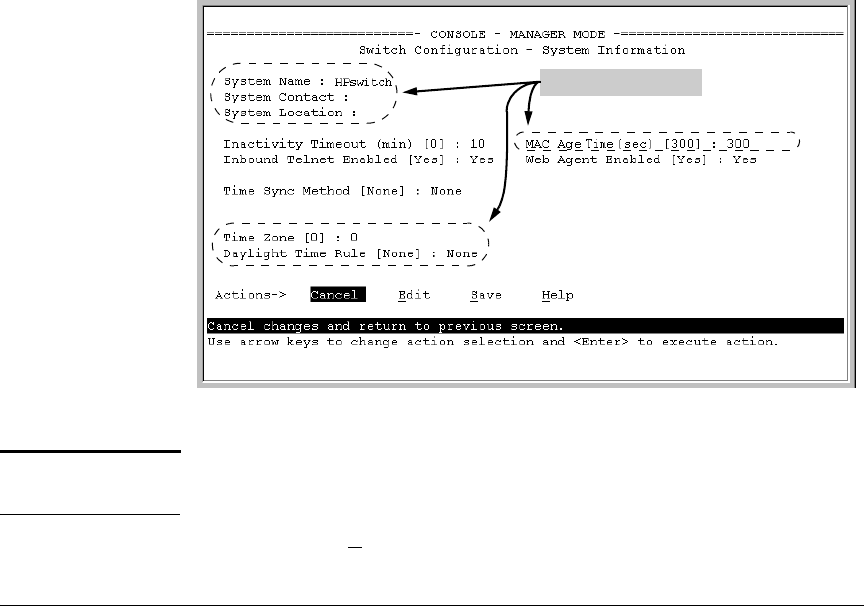
Interface Access and System Information
System Information
Time Zone: The number of minutes your time zone location is to the
West (-) or East (+) of Coordinated Universal Time (formerly GMT). The
default 0 means no time zone is configured. For example, Berlin, Germany is
in the +1 zone, while Vancouver, Canada is in the -8 zone.
Daylight Time Rule: Specifies the daylight savings time rule to apply for your
location. The default is None. (For more on this topic, see Appendix
E,
“Daylight Savings Time on HP ProCurve Switches.)
Time: Used in the CLI to specify the time of day, the date, and other system
parameters.
Menu: Viewing and Configuring System Information
To access the system information parameters:
1. From the Main Menu, Select...
2. Switch Configuration...
1. System Information
System Information
Figure 7-6. The System Information Configuration Screen (Default Values)
Note To help simplify administration, it is recommended that you configure
System Name to a character string that is meaningful within your system.
2. Press [E] (for Edit). The cursor moves to the System Name field.
7-10
